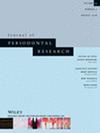TRPV1 Promotes Periodontitis Tissue Inflammation and Oxidative Damage by Regulating STAT3 Signaling Pathway
Abstract
Aims
Periodontitis is a chronic disease affecting adult oral health. Transient receptor potential vanilloid 1 (TRPV1) expression is shown to upregulate in many inflammatory diseases. Nevertheless, its biological potential along with the molecular mechanism in periodontitis is unclear. Our study aimed to explore the biological role and underlying signaling pathway of TRPV1 in periodontitis.
Methods
In the current research, human periodontal ligament stem cells (hPDLSCs) were stimulated by lipopolysaccharide (LPS) to induce inflammatory conditions in vitro. In vivo, the periodontitis mouse model was built by ligating the gingival sulcus of male C57BL/6J mice. Thereafter, the proliferation, apoptosis, inflammation, and oxidative stress-related processes were assessed.
Results
We found that LPS induced apoptosis and inflammation in hPDLCs, along with oxidative stress, while simultaneously inhibiting hPDLC proliferation (p < 0.05). Notably, TRPV1 expression was elevated in LPS-treated hPDLSCs and gingival samples from patients with periodontitis. Interestingly, the increase in TRPV1 expression induced by Capsaicin, a TRPV1 agonist, inhibited cell proliferation while promoting LPS-stimulated apoptosis, inflammation, and oxidative stress in hPDLSCs (p < 0.01). In contrast, inhibition of TRPV1 expression using Capsazepine, a TRPV1 inhibitor, produced opposite effects (p < 0.01). In vivo experiments revealed that inhibition of TRPV1 attenuated ligation-induced periodontitis in mice, as evidenced by enhanced oxidative stress, inflammatory response, and elevated apoptosis (p < 0.01). Additionally, rescue assays indicated that TRPV1 promoted periodontitis-associated tissue inflammation and oxidative damage via activating the STAT3 signaling pathway (p < 0.01).
Conclusion
Our study demonstrates that TRPV1 expression is high in periodontitis and facilitates periodontitis-associated tissue inflammation and oxidative damage by regulating STAT3 signaling pathway, which implies that TRPV1 may represent a new therapeutic target for periodontitis.


 求助内容:
求助内容: 应助结果提醒方式:
应助结果提醒方式:


